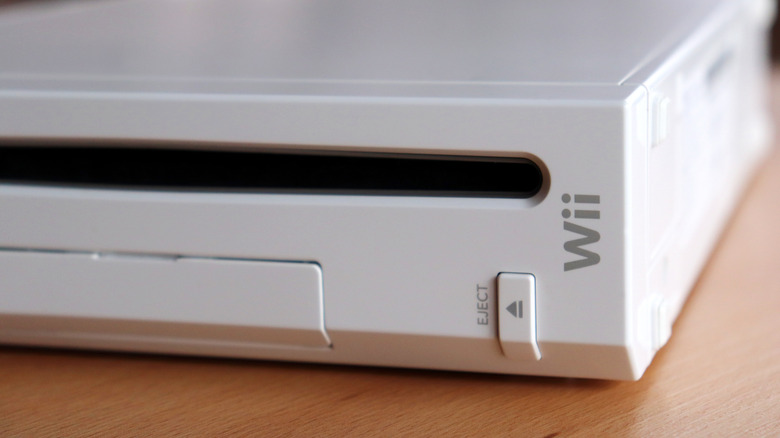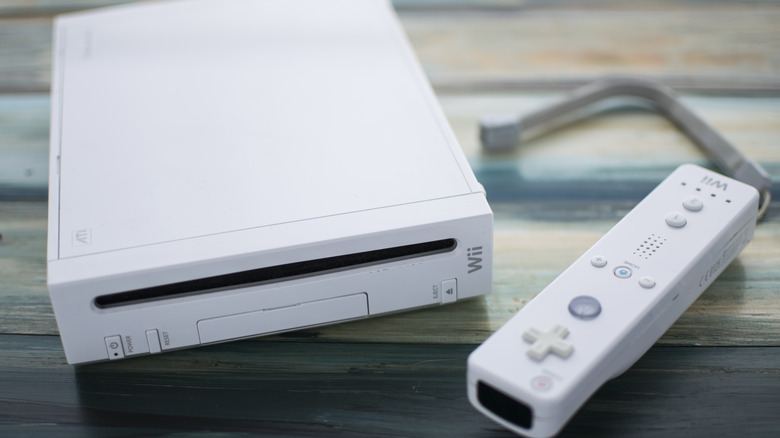The Hidden Meaning Of Nintendo Wii's Blue Light
It's no exaggeration to say that Nintendo's Wii was a game changer in the industry. The diminutive console won the seventh generation console war by a landslide (via VentureBeat) and marked Nintendo's pivot into creating a family-oriented gaming market for an edge over its competitors. It even demonstrated considerable lasting power compared to the more "hardcore" consoles: Believe it or not, the very last game to be released for the Wii was "Just Dance 2020," launched the same year that Nintendo officially said goodbye to and discontinued repairs for the console they released in 2006.
While there is some debate on whether the Wii was a "false success" that attracted casual gamers with no enduring brand loyalty (per Destructoid) or a major turning point that saved Nintendo and re-introduced a family-oriented aspect to the gaming industry (per Slate), there's no question that it owed much of its success to its meticulous design. From interviews about the Wii's development (translation via ArsTechnica) to those about its various software additions and functions (via Nintendo), it's clear that a great deal of thought was put into every detail of its form and function to become an easy and convenient addition to any home.
But, according to a key Wii developer, it wasn't all about optimized performance and universal appeal— there was a whimsical secret behind the blinking blue light that signaled internet connectivity and new updates. It was synchronized to the cry of the Japanese Bush Warbler.
A fun, but puzzling detail
At the 2008 Game Developers Conference, Wii developer Takashi Aoyama spoke about the development of the console's internal hardware programming and the process of implementing WiiWare, a recent addition to the console at the time (per GamesIndustry.biz). According to Wired's breakdown of the panel, Aoyama mentioned the fact that the blinking blue light that indicated a received message was deliberately timed to the distinctive cry of the Uguisu (known as the Japanese Bush Warbler in English) — a common bird frequently heard just about anywhere in Japan, as well as the rest of East Asia during certain seasons (per IUCN). He then moved on from this quirky aside as quickly as he mentioned it, offering no explanation as to why this design choice was made and leaving English audiences — from fan forums as well as publications like Kotaku — puzzled by the seemingly random factoid.
However, a closer look at the Warbler's Japanese name suggests that Aoyama might have felt no need to explain. Apparently, "Uguisu-jō" (lit. "Warbler woman") is the term for the female announcer at a baseball game, election rally, and many other occasions that warrant a PA system and a professional tone. While the connection has never been officially confirmed by Aoyama or anyone else from Nintendo itself, the mystery behind evoking the call of a Warbler for the Wii's message notification seems to be no more than a light-hearted and obvious audiovisual pun.


